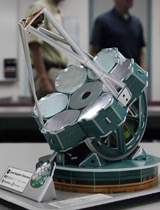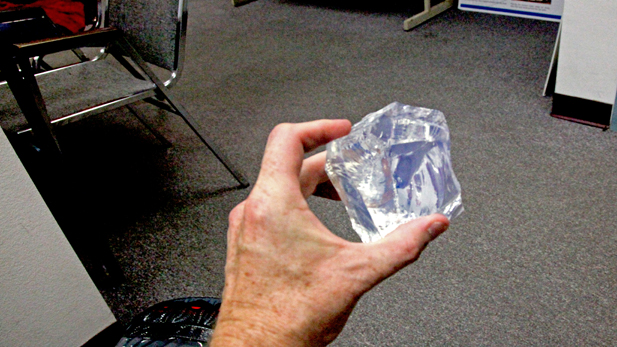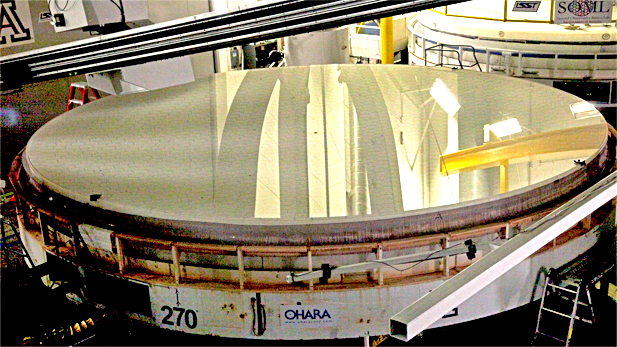The Steward Observatory Mirror Lab recently finished work on the first mirror for the Giant Magellan Telescope, or GMT, which is being built on a high mountaintop in Chile.
 A model of the Giant Magellan Telescope's 7-mirror array and mount.
A model of the Giant Magellan Telescope's 7-mirror array and mount.The mirror, known as GMT1, is 8.4 meters (27 feet) in diameter and weighs 20 tons. It will be held in storage while the lab continues work on the rest of the GMT's mirrors. Officials overseeing the GMT say it is the world's most advanced telescope mirror.
The Giant Magellan Telescope will use seven mirrors operating together to create a single optical surface 82 feet in diameter. Upon completion in about a decade, the telescope will have ten times more resolving power than the Hubble Telescope.
The Mirror Lab is building all seven of the GMT's mirrors. GMT2 is nearly ready for polishing and workers are creating the mold for GMT3.
Roger Angel founded the Mirror Lab. He's a Professor of Astronomy and Optical Sciences at the Steward Observatory. He predicts the seven mirrors and an extremely sensitive camera will give astronomers a whole new look at the night sky.
“Today we're just able to see the very brightest planets around other stars,” Angel says. “With the Giant Magellan Telescope, we should really be able to see lots of them.”
The process of casting the mirrors takes several years to complete. A circular mold is "loaded" with 20 tons of glass chunks, then placed into an oven. The oven rotates for months and, at its peak, runs at 2,100 degrees Fahrenheit, melting the glass into honeycomb-shaped spaces in the mold. After casting, technicians use highly specialized tools to grind and polish the surface to a high degree of accuracy, which is what truly makes it effective as a telescope mirror. GMT1, according to Mirror Lab officials, has an optical surface accuracy within about 25 nanometers, or about one-thousandth the thickness of a human hair.
Learn more about Arizona astronomy, at our Collecting Light story collection.
 A chunk of glass used to make telescope mirrors. About 20-tons of these chunks are placed into a mold and then melted to form a single mirror.
A chunk of glass used to make telescope mirrors. About 20-tons of these chunks are placed into a mold and then melted to form a single mirror.

By submitting your comments, you hereby give AZPM the right to post your comments and potentially use them in any other form of media operated by this institution.